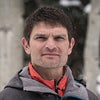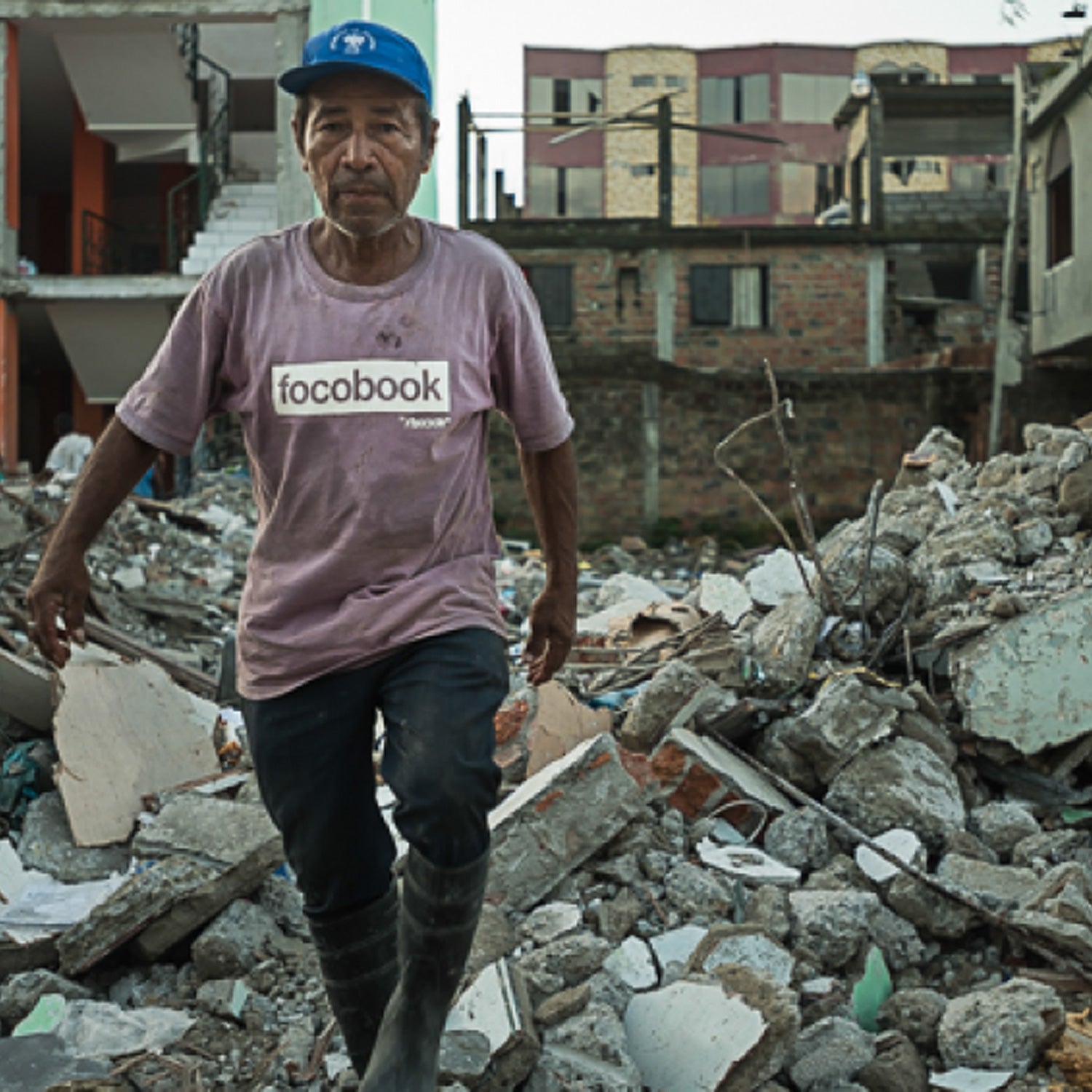When a 7.8-magnitude earthquake on April 16, it killed more than 650 people and left much of the 300-mile-wide impact zone uninhabitable. Seven days later, Kit Miyamoto flew into Quito,┬Āthen took a military transport plane to the coast to commence what has become standard protocol for him after any major quake around the world: wading through obliterated cities and towns to help survivors rebuild their lives.
Miyamoto, a structural engineer based in Venice Beach, California, specializes in earthquake preparedness and recovery. He helps governments determine which buildings can be saved and which ones must be torn down, then teaches local engineers, contractors, and masons how to build stronger structures in the future. ŌĆ£WeŌĆÖre here to help them get back to their normal state as fast as possible. ThatŌĆÖs why we exist,ŌĆØ Miyamoto says. ŌĆ£Because what you need everydayŌĆöa place to live, a place to work, a place to worship and go to schoolŌĆötheyŌĆÖre all gone, essentially overnight.ŌĆØ
He touched down in Nepal three days after the quake that rocked Kathmandu last year, and played a crucial role in China, Haiti, and Japan after their respective disasters in 2008, 2010, and 2011. On May 16, his firm, , won a Presidential ŌĆ£EŌĆØ award from the Department of CommerceŌĆöthe highest recognition a U.S. entity can receive for expanding the countryŌĆÖs exports, which in MiyamotoŌĆÖs case means the earthquake expertise he and his staff provide to countries around the world.╠²
The Tokyo-born 53-year-old immigrated to California after high school. ŌĆ£I told my mom and dad, ŌĆśI gotta move to the United States to play for the Dallas Cowboys,ŌĆÖŌĆØ he chuckles. He played halfback for two years at Butte Community College, where Green Bay Packers quarterback Aaron Rodgers played, then blew out his knee. ŌĆ£Plan B was to be an earthquake engineer,ŌĆØ he says. ŌĆ£ThatŌĆÖs what you want to do when you grow up in Japan and live in California.ŌĆØ┬Ā
We caught up with Miyamoto by phone from Bah├Ła de Car├Īquez, Ecuador, to talk about life in disaster zones, what is misunderstood about earthquakes, and why California remains ŌĆ£totally exposedŌĆØ to a monster quake.╠²
OUTSIDE: WhatŌĆÖs a typical day like for you in Ecuador?┬Ā
MIYAMOTO: Right now weŌĆÖre living in a little jungle shack hotel in Portoviejo. IŌĆÖm sharing a room with another engineer. Today, we did an assessment at a damaged hotel then we went to a badly damaged public school that is owned by the Catholic church and local government. TheyŌĆÖre taking the building down, so we told them how to rebuild it stronger to resist a future earthquake. We also looked at a beautiful cathedral next to the school, and they want to strengthen it, so weŌĆÖre going to show them how to do that. WeŌĆÖre meeting the countryŌĆÖs bishop later tonight.╠²
You are also CaliforniaŌĆÖs Seismic Safety Commissioner. What does that entail?┬Ā
Basically I advise the governor and policy makers on how to reduce and manage the seismic risk in California. IŌĆÖve seen best and worst practices in disaster zones, and thatŌĆÖs something I share with California. People donŌĆÖt realize that California hasnŌĆÖt experienced a true urban disaster since 1906 [when a 7.8 magnitude quake killed more than 3,000 people and destroyed 80 percent of San Francisco]. These earthquakes we saw in 1989 [when the Loma Prieta quake killed 63 people] and 1994 [when the Northridge quake killed 57], they were moderate compared with what we are going to seeŌĆöand I guarantee it will happen.╠²
How vulnerable are CaliforniaŌĆÖs cities, really?┬Ā
San Francisco, Los Angeles, San Diego, and Sacramento are totally exposedŌĆöIŌĆÖd say at least 70 percent of CaliforniaŌĆÖs residents are exposed to major risk. Less than 10 percent of houses are covered by insurance for earthquakes┬Āand they have a very high deductible.╠²
Is there anything you can do or tell the governor to make these cities less exposed?
I think the public sector cannot do everything. The private sector has to be the solution. When people spend money to reinforce their homes, things as simple as wrapping concrete columns with fiber-reinforced plastic makes them much stronger and is very cost effective. You can also put shock absorbers in buildings, and thatŌĆÖs cost effective tooŌĆömaybe five percent of the overall construction cost for an apartment building.╠²
How do the shock absorbers work?┬Ā
TheyŌĆÖre just like shock absorbers in a car; you have a spring and you put them behind a window or between the walls, and it makes a huge difference. It may not save the building from having to be torn down, but it could save lives. Some people understand the value of that, some understand that itŌĆÖs a social responsibility, and some people donŌĆÖt care.╠²
What is the worst destruction youŌĆÖve ever seen from an earthquake?┬Ā
Sichuan, China [where a magnitude 8.0 quake killed 69,000 people in 2008]. It hit on a Monday at 2:30 p.m., and many big schools completely collapsed, which killed thousands of kids. The same thing could have happened in Nepal last year; they lost almost 7,000 schools there. But it happened at noon on a Saturday, so it was a lucky earthquake. Same with this latest quake in Ecuador: it happened on a Saturday afternoon and destroyed about 300 schools. Schools are one of the most dangerous building types, because of their big rooms and because they are usually built by public entities really rapidly.╠²
In CaliforniaŌĆöeven just in L.A.ŌĆöthere are hundreds of older schools constructed in the 1940s, ŌĆÖ50s, and ŌĆÖ60s, before modern technology. Some school districts are actively identifying these schools and looking at how they can strengthen them. To me, thatŌĆÖs the best thing government can do, because we cannot save everyone, but letŌĆÖs save the people most important to us: our children.
Is there a particular image from your travels that illustrates the power of a major tremor?┬Ā
Many years ago, I was checking schools in the middle of the Sumatran jungle for the government, and there was a humongous fault going through this jungle. It was probably a mile wide and a couple hundred meters deep. Just a gigantic gash in the earth. Also, the 2011 tsunami in Japan was really bad. Entire towns were completely wiped out; it looked like a nuclear blast had gone off. And in California, guess what? We donŌĆÖt have a warning system for a tsunami like that. In JapanŌĆÖs case, they lost cities, but they probably saved at least a couple hundred thousand people with their warning system.╠²
What do people misunderstand about what a big quake does to a civilized area?
In a matter of minutes, you are going to have no cell phone, no power, nothing. After a few days, you may have no access to food or water or gas. So itŌĆÖs important to be self-sufficient. If you live in a high-risk urban area, you should have at least a two-week supply of water and food.╠²


